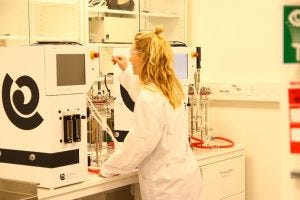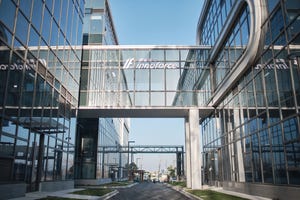- Bioprocess Insider
- Sponsored Content
- Therapeutic Class

Bursting the bubble: COVID-19 and the gene therapy skills baseBursting the bubble: COVID-19 and the gene therapy skills base
Despite global lockdowns during the ongoing COVID-19 pandemic, the development of gene therapy products is on a significant upward curve.
April 6, 2021

Sponsored by Cobra Biologics
Despite various global lockdowns during the ongoing COVID-19 pandemic, the development of gene therapy products is on a significant upward curve with record fundraising in 2020.
However, manufacturing is an increasing bottleneck in realizing the full potential of many DNA and viral vector facilities, and COVID vaccine production will have undoubtedly exposed this shortfall in production capacity. Such a deficit was and is being addressed on one level by significant investment in production facilities, and secondly by the development of improved ATMP technologies.

Image c/o Cobra Biologics
Stepping up the skills base
To deliver on these investments also requires a diverse and highly skilled work force, and here lies the key challenge. How to address the skills shortage? The issue is a major challenge for both the biotech sector as a whole and governments looking to support the production of multiple COVID-19 vaccines, therapies and diagnostics, as well as existing and new therapies. There is an increasingly clear need to establish a long-term strategy to grow the required skills base.
COVID-19 has highlighted not only the need for the rapid production of vaccines, but the benefit of having a robust life sciences industry to all, raising awareness in schools, colleges, universities and wider society. However, there still seems to be a limited appreciation of the pharmaceutical, let alone the biopharmaceutical, career opportunities that are available. As an industry we have struggled to engage in STEM activities as, unlike the engineering sector, our activities are not always tangible to prospective students. We need to address this by engaging earlier in a students career and providing demonstrable information to the general public on potentially a global scale.
Today, the development and production of COVID-19 vaccines and therapies provide an evocative route to engage with schools and academic institutes to highlight what the industry does, how it benefits society, the opportunities within and how people from all backgrounds can be part of it.
Harnessing opportunities
To address this skills shortage, we also need to bring people in from outside the industry. To my mind one of the main shortcomings is that we all too often believe that our manufacturing challenges are somehow unique to the sector and that only people from within the biopharmaceutical sector can solve our problems. However, the reality is that many other industries operate within highly regulated environments such as the aerospace and automotive sectors. The COVID-19 crisis has led to a large number of highly skilled people losing their jobs, and now is the time to reach out to these people, to bring new skills and mindsets into the industry to help address the manufacturing challenges we currently face.
Training is key
To develop people entering the industry, training is going to be critical; biopharmaceutical production is complex, requiring a broad range of skills and backgrounds from process development through to operations, analytical and quality systems, project and logistical management. Whilst the industry has been successful at recruiting graduates into research roles, there is a much greater challenge around attracting staff into process development and manufacturing.
In the UK, we have established successful apprenticeship schemes such as the Advanced Therapies Apprenticeship Community (ATAC), but these alone will not meet the needs of the sector. The industry also must improve its engagement with academic centers to develop a workforce at multiple levels with the required skill bases, both through full time and part time educational courses, that have a much greater level of focus in the manufacturing and production of biotherapeutics.
In conclusion, despite the many challenges that the COVID-19 crisis has created for so many people across the globe, we must also recognize the opportunities. The cell and gene therapy sector should harness this and seek to “burst the bubble” around the sector, allowing it to be seen as a critical business that’s contribution is recognized across society and one which people from all backgrounds can contribute to.
About the Author
You May Also Like






